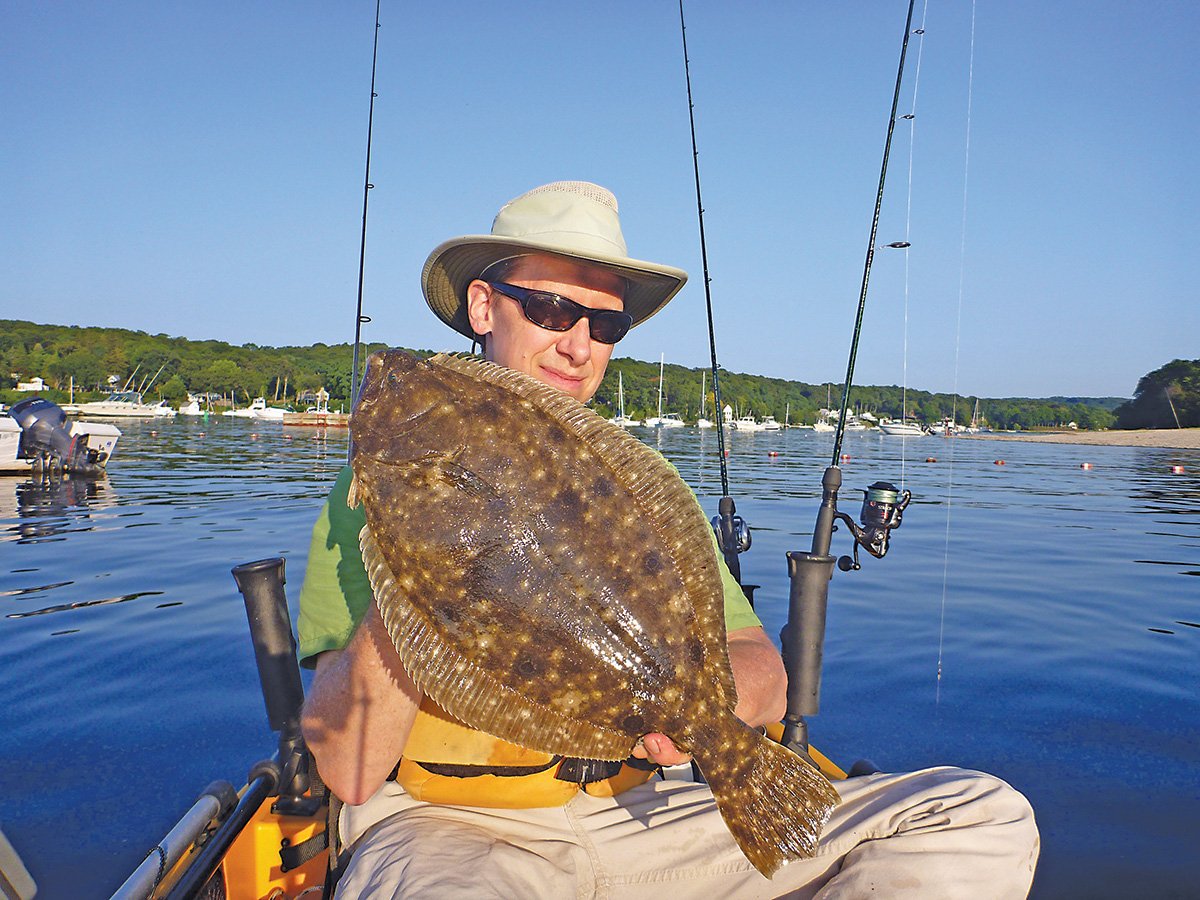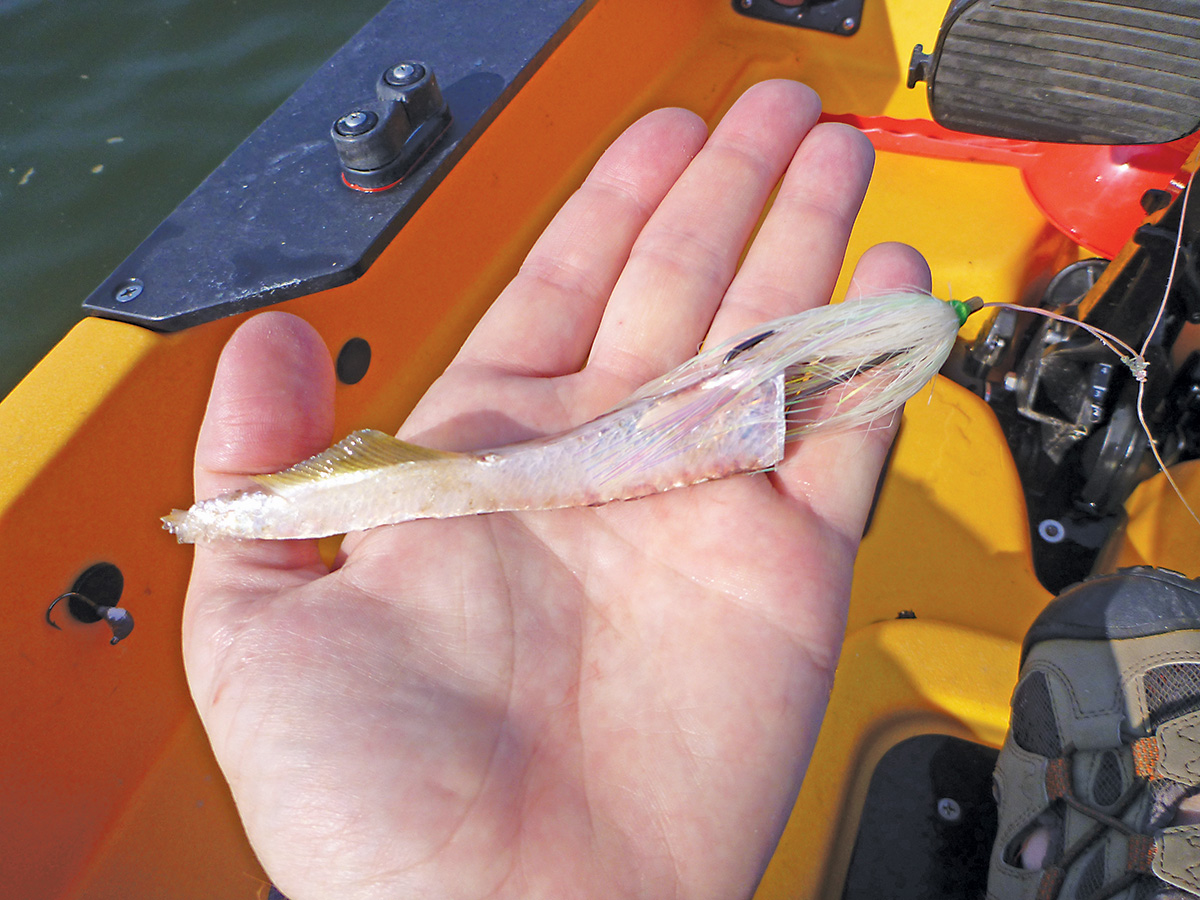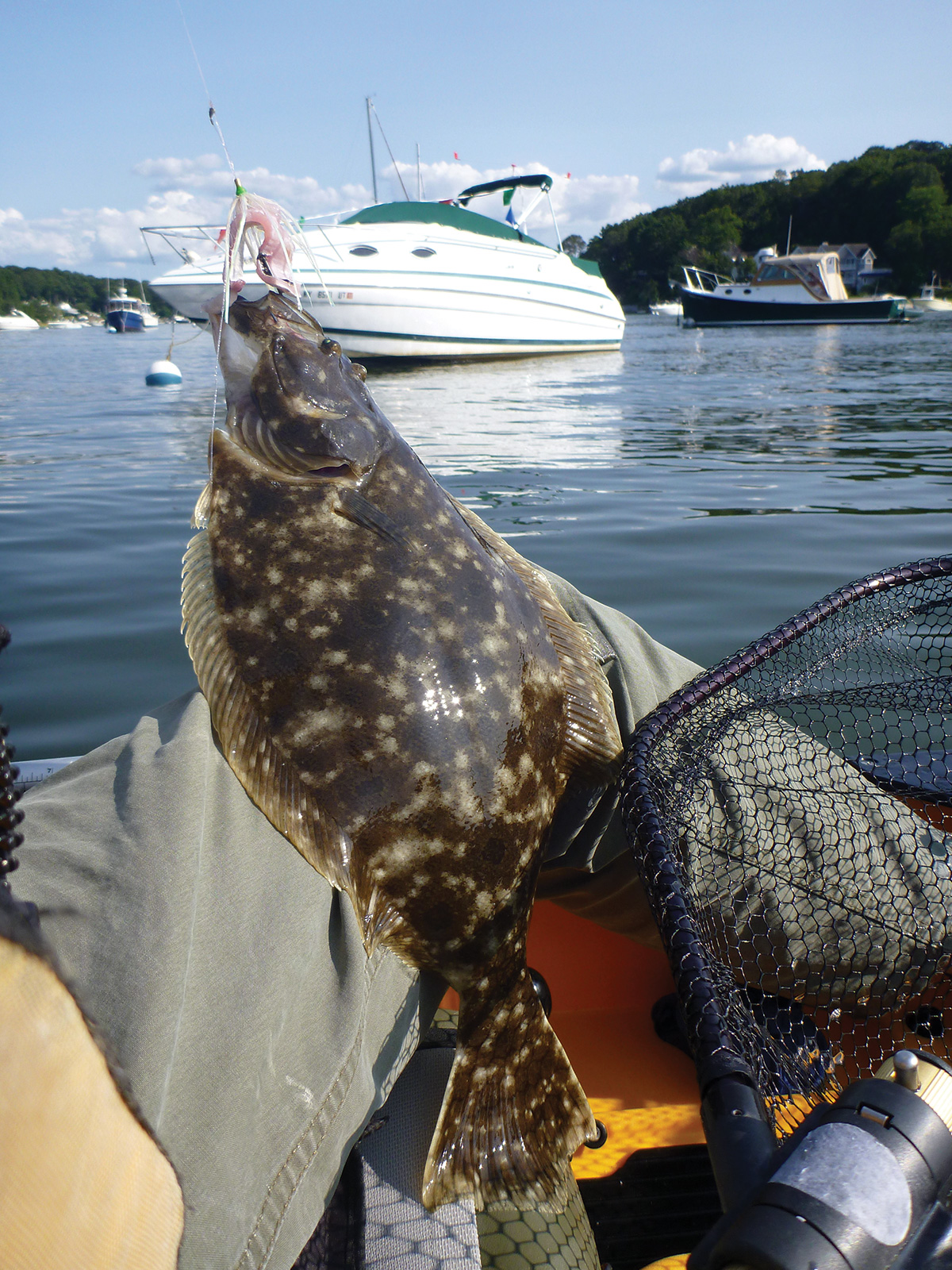
Who doesn’t look forward to fluking in the spring? After a long winter, enthusiasm for our favorite local flatfish is at its peak, spurring anglers from both the north and south shores of Long Island Sound to flock to the harbors and bays as the advance wave of the toothy, two-dimensional predators arrives. The bite can be hot in many areas throughout June, but the action soon wanes in the shallow inshore waters as the dog days of summer settle in. Keepers become increasingly hard to come by in the bays and harbors as the season drags on, with the bulk of quality fish coming from deep, mid-Sound waters.
Many anglers often are not aware that a second inshore bite usually takes place in the last few weeks of the season. A strong late-season run doesn’t materialize every year, but where I fish, along the North Shore of Long Island, this season’s end bay bite often surpasses the action in the spring. A combination of cooling water temps and an abundance of bait is what seems to fuel the action. At this time there is simply a greater quantity and variety of bait in the harbors than at any other point of the season. One can often find bunker of all sizes, the very largest spearing, snappers, and the young of many other inshore species such as porgies, sea bass, and sea robins, all providing fodder for hungry fluke as they fatten up in preparation for the fall migration. The specific period when this occurs may vary according to location, as well as from year-to-year according to weather conditions, but generally the action peaks a week or two either side of Labor Day.
A pleasant advantage to this late-season fluke run is the lack of other anglers. You may not be fishing alone, but rest assured you won’t be out there jockeying around other boats for a prime drift. Instead, expect to see plenty of boats blowing past you at top speed towards the big water. As an additional plus, while early-season fluke are often thin, these late fish are sometimes downright obese. Last season, I caught a few that were so fat when I laid them down their fins stuck straight out to the sides instead of resting on the deck!
Just knowing the fluke are out there at this time is enough to be able to go out and target them, but over the years I’ve honed some strategies specific to this bite, a few of which I’ll share here. For much of the fishing season Berkeley Gulp is my bait of choice for fluke, but this is one situation where I avoid it in favor of fresh strip baits. My reasons for this are twofold. First, the abundance of bait in the harbors means that I can usually obtain enough for a trip within 15 minutes. Second, there are often so many voracious snappers around that my Gulp gets nibbled down to a mere nub shortly after touching bottom, which can get expensive pretty quickly.

When snapper-bluefish begin to seem like a curse is when I opt to turn them into a blessing. Snappers can easily be caught near most launch sites, so I bring along a light spinning outfit and a small selection of lures to catch some for bait. Live snappers are highly touted as fluke bait, but I don’t recommend using them live in this setting. There are simply so many hungry, short fluke about in the harbors that a live snapper intended to lure a doormat will be quickly stolen by something sublegal. Keeping snappers alive just to feed them to the shorts is way more trouble than it’s worth. You’ll do much better cutting them up for strips. When catching snappers for bait, just keep in mind that while there is a 15-fish limit on bluefish, no more than 10 can be less than 12 inches, making the snapper limit 10 fish.
Bunker are another good strip bait option. While few anglers use bunker strips for fluke, they work great when very fresh and firm. If neither of those first two choices are present, I throw on a piece of Gulp and fish mid-channel to catch a few sea robins to supply my fresh strips. When cutting any strip baits, make sure to shave excess flesh off your fillets to leave them about 1/4 inch thick. For cutting snappers and bunker your first cut should be made along the belly with the fish’s back on the cutting board. This belly strip is the choicest piece to use, as it’s durable and can withstand frequent hits from toothy fluke. Next, place the fish on its belly and cut a strip off the fish’s back. Fillet the sides of the fish last to prepare your final strips.
As for rigging, I go with my standard go-to teaser rig, consisting of a bucktail jig on the bottom, and a second hook run off a short dropper loop about a foot above. I usually rig a plastic or bucktail teaser on that top hook as well. In rocky areas with a lot of potential snags, I often switch the bucktail jig for a sinker and just bait up the top hook.
Late season harbor fluking centers around making short, targeted drifts, sometimes in close quarters, so it’s best to stick to using a small craft of less than 20 feet in length. You needn’t have a fancy rig decked out with state of the art electronics to win at this game. Any small boat, kayak, or even paddleboard will be enough to put you onto the fish.
When I first hit the water, I usually head to the harbor mouth to fish the channel edges. Look for edges that are steep, and as close to shore as possible, such as often occurs near the tip of a point or bar. If there is a grassline or dock on the shore, that’s ideal. The fluke will be lying along those channel edges hoping to ambush prey that is hugging the shoreline structure. Try and keep your drift right on the slope, if possible. It can be tricky finding the optimal depth at first. Go too deep and you’ll miss the most actively feeding fluke; go too shallow and you’ll have your baits relentlessly stripped by snappers. Finding and staying in that sweet spot is the challenge.
As you’re fishing, keep an eye on what’s going on around you in the harbor. If you see baitfish being ambushed, make a move and fish that area. It doesn’t matter what’s chasing the baitfish, rest assured that down below the surface action some fluke have joined in the fray. The presence of bluefish is a particularly good sign. While you may feel the urge to switch out your fluke rigs for some wire leaders and poppers, you’ll be better off resisting that temptation. Some of my best late summer fluke catches have come from fishing the aftermath of blues crashing peanut bunker. Should you see a blitz occur, note the location, then take a few drifts at that location a little while after the blues have moved on. Fluke aren’t stupid, they will capitalize on the fallout from the frenzy, gobbling up the shredded and wounded peanuts as they spiral to the bottom. It almost goes without saying that this is an especially good time to use peanut bunker as bait. Employing this tactic has resulted in some of the quickest limits I’ve ever caught.

If the channel edges don’t pan out, and you’re not seeing any surface activity, then it’s time to look for some other boats. By this I don’t mean you should look for other anglers with the aim of mugging their spots; I mean to head for the boat moorings that crowd almost every North Shore harbor. Moored boats and floating docks are magnets for baitfish, especially late in the season when their bottoms will be host to some underwater growth. The main challenge to fishing moorings is avoiding getting snagged on the anchor chains and ropes. This is an excellent opportunity to employ a kayak, as it allows one to maneuver in tight spaces. For this tactic, look to fish in less than 20 feet of water, as the tendency of such surface objects to attract the bottom-dwelling fluke diminishes with increasing depth.
My final keeper of 2017 was caught by employing this very method. I was at the end of a late-day kayak excursion, and had done pretty well fishing the channel edges, having culled a couple of fat keepers from a number of shorts. On my way back to my launch site, I took a short drift by some moored clam boats in about 12 feet of water. It took but a moment for me to tie into, and then drop, a nice fish right in between two of the boats. Being so close to those stationary objects, I was able to pinpoint the location of that fish. For a good 10 minutes I worked my bait in tight circles before finally getting the fish to bite a second time. This time the chunky, 4-pound keeper came to the net just before the setting sun touched the horizon.
When summer heat drives the fluke deep, don’t think the action in the bays and harbors of the Sound is done for the season. As the kids start prepping for school, and fall approaches, the bay bite often has a reprise. This year, head out and give it another shot, you may be pleasantly surprised with the action you find.





